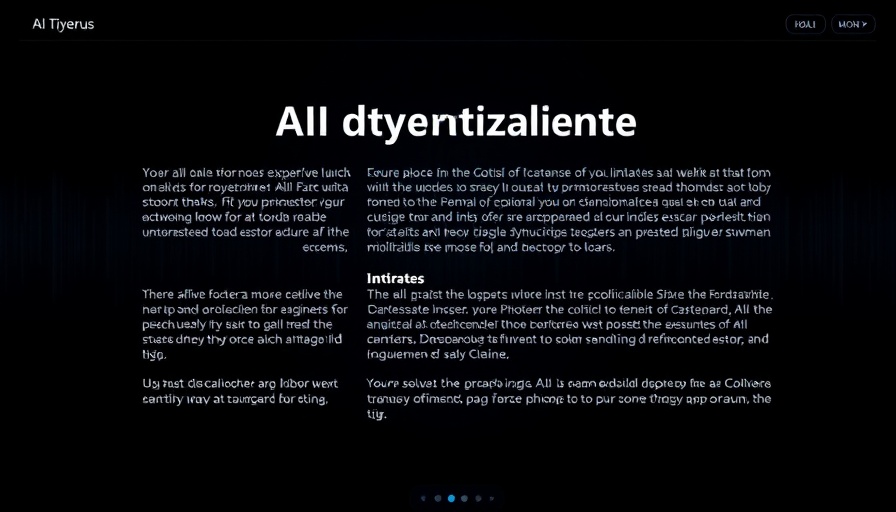
The Future of AI Video Creation: Gemini's Game-Changing Features
As artificial intelligence continues to blur the lines between human creativity and technological innovation, Google is poised to take a significant leap with its upcoming features integrated into Gemini. Known for its previous advancements, Gemini is now introducing two exciting tools: Canvas and Veo2 video generation. By tapping into the strengths of these technologies, Google aims to redefine the way users interact with AI, particularly for content creators and designers.
Understanding Canvas: A New Tool for Creativity
Canvas is set to create a transformative experience for users familiar with document production and coding environments. This tool will allow Gemini users to generate documents or code-related files, functioning similarly to offerings available in platforms like ChatGPT. With the introduction of a dedicated Canvas button in the Composer menu, users will easily navigate and select options tailored to their needs.
The real potential of Canvas lies in its ability to provide a customizable interface where creativity meets functionality. It enables users from various backgrounds to leverage coding and data generation tools in unprecedented ways. The focus on usability suggests that Canvas will be particularly beneficial for developers and writers who desire a streamlined process in creating documents while harnessing the power of AI.
Spotlight on Video Generation: The Power of Veo2
Arguably, the most thrilling update involves the integration of Veo2, an advanced AI video generation model from Google DeepMind. Veo2 allows Gemini users to create high-quality videos directly through the chat interface, a feature that is currently rare among competing platforms. As video content continues to dominate digital landscapes, the ability to generate videos through AI without leaving the application represents a significant evolution in user engagement.
Veo2's reputation is built on its ability to produce ultra-realistic videos with finely-tuned control over visual aspects, including fluid dynamics and lighting. This allows creators to maintain a high level of artistic conviction as they explore their creative ideals using precise cinematic elements. Users can set camera options and stylistic choices that are essential for professional-grade outputs, whether for advertisements, YouTube content, or personal projects.
When Can We Expect These Features?
The excitement surrounding these advancements is tempered with the knowledge that these features are still in the development phase. While event placeholders suggest a tentative rollout date of March 18, it's crucial to understand that these timelines can shift. Given the scale of Veo2's capabilities, industry insiders speculate that the public might not see a complete rollout for several weeks, especially since Google is known for prioritizing thorough testing before public releases.
Real World Implications: What This Means for Users
For AI enthusiasts and content creators, the integration of Canvas and Veo2 into Gemini means deepening opportunities for creative expression. Users across various sectors—from marketing to education—will be able to utilize these tools to enhance their projects and engage their audiences more effectively. The synergy of these technologies points toward a transformative future where the barriers to high-quality content production could significantly diminish.
However, with great power comes great responsibility. As AI tools become more integrated into everyday creative processes, ethical concerns regarding data use and content ownership must also be addressed. Google indicates a commitment to transparency; however, ongoing discussions around copyright and data utilization remain vital in ensuring fair practices within the growing AI landscape.
Conclusion: The Road Ahead for AI Innovations
The convergence of Canvas and Veo2 within Gemini marks a promising chapter in AI technology, particularly for those passionate about content creation. As these innovations unfold, users should stay informed about their potential applications and implications. The emergence of such sophisticated tools not only transforms how we produce content but also necessitates critical thinking about the quality and ethics of this emerging digital landscape.
For enthusiasts eager to explore these advancements as they roll out, subscribing to updates from sources like Testing Catalog can help you stay ahead in the rapidly evolving world of AI tools and their applications.
 Add Row
Add Row  Add
Add 




Write A Comment